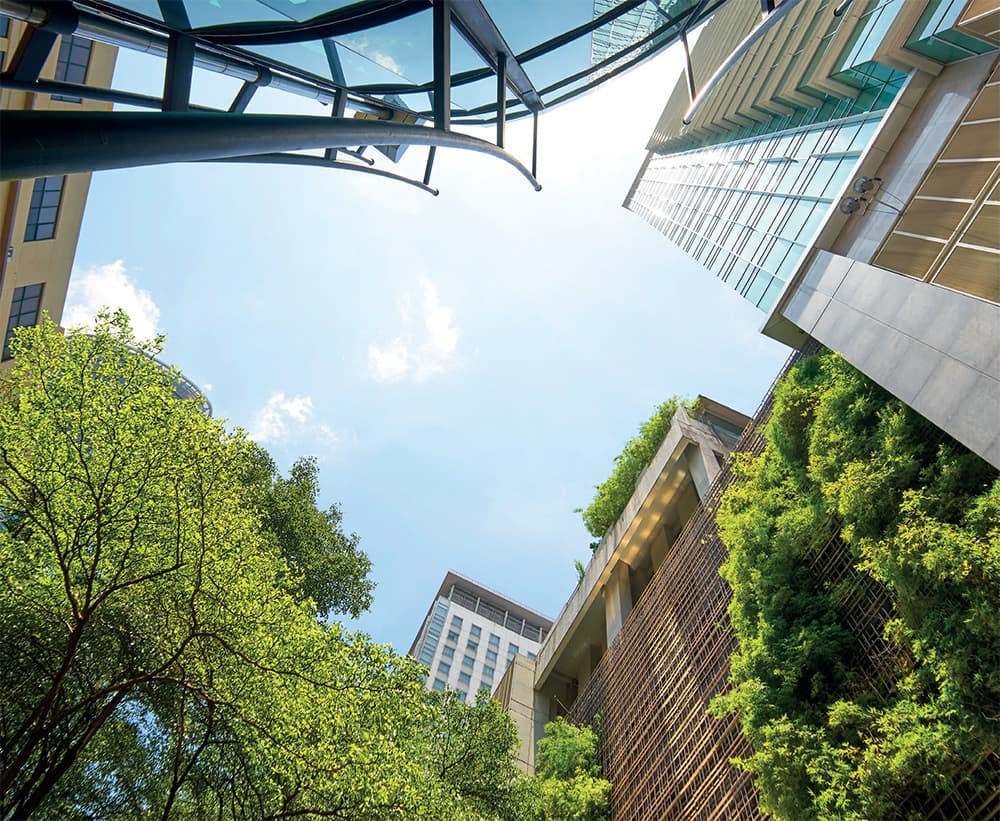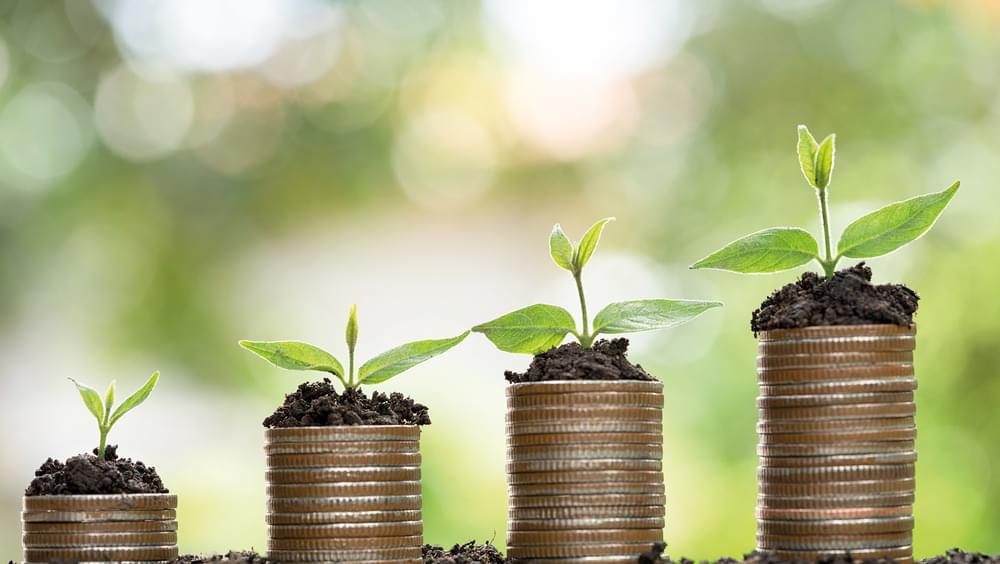Green lending is the means by which commercial lenders provide development finance to borrowers who develop green buildings or retrofit existing buildings with green or environmentally responsible features. The lending is conditional on the borrower fulfilling certain environmental criteria. Generally, this means that the borrower’s sustainability strategy is closely scrutinised.
The first Green Loan in the UK was advanced in July 2014 and since then, green lending has grown in popularity with several major banks and other lenders offering development finance for projects with sustainable elements.
Green loans are structured so that borrowers can be contractually bound to their green loan obligations. If a borrower fails to use the proceeds of a green loan for the agreed green purposes, this can cause an event of default under the facility agreement.
Background
The UK originally set a legally binding target to reduce its carbon emissions by 80% below 1990 levels by 20501. More recently, it was announced that an amendment will be made to the Climate Change Act to cut greenhouse gas emissions in the UK to “net zero” by 2050 - meaning that any emissions produced by the UK after 2050 would be offset by absorbing an equivalent amount from the atmosphere.
As 33% of UK carbon emissions come from the built environment, it clearly has a major role to play in order to help the UK meet its target.
In the interim, and to help keep the UK on track to meet its longer term target, the UK Government has set a target of reducing carbon emissions by 57% by 2032 on 1990 levels2. Its roadmap (called the ‘Clean Growth Strategy’) includes investment (£2.5bn committed to low carbon innovation) and improvements in energy efficiency for businesses and homes (eg 20% improvement in business energy efficiency and aspiration for as many homes as possible to be EPC B and C by 2035).
There is strong support from financial institutions for ‘greening’ finance and the sector is indeed growing. However, the UK is currently lagging behind other major economies offering green lending. France and Germany currently lead the green lending market in Europe3.
1. Climate Change Act 2008
2. The Clean Growth Strategy (October 2017)
3 I4CE, PwC, Climate-KIC (2017) Benchmarking the greenness of financial centres
What makes a loan ‘Green’?
‘Green Loan Principles4’ (GLPs) have been jointly developed by the lenders who are most
active in the green loan market. The principles create a framework of market standards
and guidelines so that a consistent methodology can be used when advancing green loans.
There are four components that characterise a green loan according to the Loan Market
Association (LMA):
1) Use of proceeds
This needs to be clearly described in the financial documents and all projects should offer clear, verifiable environmental benefits that can be quantified, measured and reported.
2) The process of evaluation and selection of projects
The borrower needs to inform the lender of its sustainability objectives, process, eligibility and exclusion criteria and how it intends to manage any environmental risks in the project.
3) Management of proceeds
The green loan should be recorded and ring-fenced in a dedicated account for transparent tracking.
4) Reporting
Borrowers must provide up-to-date information on the use of the green funds and its expected impact on the project on an annual basis until all the funds have been used. The information must be readily available to all institutions participating in the loan.
4. Loan Market Association - Green Loan Principles (March 2018)
How does green lending work in practice?
A ‘green loan’ is only available for new or existing eligible ‘green projects’, such as renewable energy, energy efficiency and green buildings.
To be eligible under the green buildings category, the building in question must meet, ‘regional, national or internationally recognised standards or certifications’. The specific standards and certifications are not expressly stipulated, however in the UK the certification systems most frequently used are:
- ‘BREEAM’ (the Building Research Establishment Environmental Assessment Method). Developed in the UK in 1990, the rating system awards points for commercial buildings under categories such as energy, material and waste, and pollution. The procedure was completely revised in 2008 and now takes the whole life cycle of the building into account.
- ‘CfSH’ (the Code for Sustainable Homes). Launched in the UK in 2006, this is a methodology under which the sustainable design and construction of new homes can be assessed and certified. It was introduced with the aim of reducing carbon emissions and creating more sustainable homes across the UK and, whilst mandatory for a period, is now voluntary. Gardiner & Theobald’s Development Monitoring team is currently monitoring a number of developments that have green lending as part of the overall funding package. These developments are predominantly residential and so the applicable certification system is CfSH.
At the outset the borrower commits under the facility agreement to achieve a Level 4 certification under CfSH and to complete the development in accordance with the GLPs. Under our construction phase monitoring for the lender, we track progress of the achievement of the constituent parts of the Level 4 certification and report on this to the lender each month. The process is completed upon satisfactory confirmation that Level 4 certification has been achieved.

What do lenders and borrowers get out of green lending?
Firstly, kudos. It is becoming ever more important for organisations to be able to demonstrate their green credentials and a high level of commitment to social responsibility can illicit favourable public opinion. Both lenders and borrowers can use participation in green lending to enhance their reputation and public image.
Green lending also gives borrowers access to alternative funding sources. As the sustainable funding market grows and develops, more capital will become available to would-be borrowers keen to support the UK’s climate change agenda.
Whilst there is currently no regulatory advantage in securing a green loan, this may soon change. The EU commission has announced that it is considering lowering capital requirements for sustainable finance as part of its action plan for financing sustainable growth5.
It’s not yet clear whether or not green loans provide consistently more favourable interest rates compared to loans for other purposes. Because companies seeking green loans are often perceived as being more socially responsible and financially stable, interest rates offered may be marginally lower than regular commercial loan interest rates.
However, many European lenders do appear to be providing margin discounts when advancing green loans to borrowers committing to reducing energy usage within their buildings6.
In the UK, in March 2016, Lloyds Bank pledged £1bn in loans for green buildings under the framework of its Commercial Real Estate Green Lending Initiative. Under the scheme, borrowers could benefit from a margin discount of up to 0.2% for loans over £10 million in return for meeting specific sustainability covenants for the duration of the loan.
Fast forward two years later and Lloyds has launched an even larger green finance initiative. Its new £2bn Clean Growth Finance initiative for business clients is an attempt to deliver the most inclusive green funding in the market. Discounted lending will be offered to projects that aim to curb carbon emissions through building or infrastructure upgrades, improve energy or water efficiency, reduce waste levels and enhance recycling rates, and deploy low carbon vehicles and transport infrastructure.
5. European Commission’s “Action Plan: Financing Sustainable Growth”
6. M&G Real Estate – Green buildings: what are the financial benefits for investors? (November 2018)
Latest developments
The UK Green Building Council (GBC) has launched a new programme called, ‘Advancing Net Zero’ which aims to eliminate emissions from buildings. Under the initiative some of the UK’s largest construction and property businesses have teamed up in an attempt to cut emissions to net zero by mid-century.
Members, which include the Berkeley Group and Redevco Foundation, will seek to develop a definition for ‘net zero buildings’ in the UK market and will agree on proposals to strengthen building standards.
‘Efforts to make greener homes more attractive to buyers are gaining ground.’
Efforts to make greener homes more attractive to buyers are gaining ground. Several lenders are offering ‘green mortgage’ products that allow borrowers that opt for more energy efficient new build homes to access cheaper mortgage rates. A slightly different take on this is being developed through a partnership between BNP Paribas and E.ON. This product will allow homeowners to use their mortgage to borrow a further loan to fund energy efficiency improvement works to their property. BNP Paribas and E.ON note that the improvements funded through the loan scheme could also result in a cheaper mortgage rate once a home has been assessed to measure any improvements to its energy efficiency.

Conclusion
With a growing emphasis on sustainability and the need to cut carbon emissions, there is certainly scope for green lending to become more widespread in the UK. As more borrowers become aware of this source of development finance, more lenders should start to develop their green loan offering to the market.
Green lending will hopefully follow the lead of the green bond market (which broke through the $150bn mark in 2017) in terms of growth, whilst providing an innovative and alternative source of development finance to help the UK with its immense task of reducing carbon emissions.
- Download a PDF of this article
- To find out more about our development monitoring service visit our webpage





